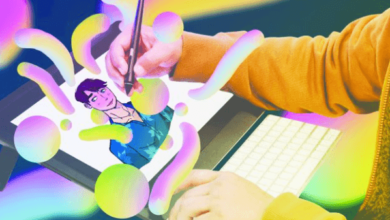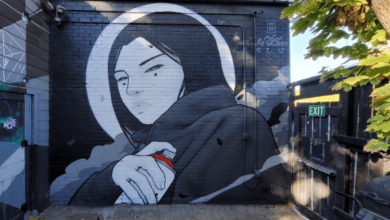The Impact of AI on Modern Art Creation

Introduction
Artificial intelligence (AI) is revolutionizing countless industries, and the world of art is no exception. Traditionally seen as a purely human domain, art is now being transformed by AI technologies, which are enabling artists to explore new creative frontiers, redefine their processes, and even challenge the very definition of art itself. The impact of AI on modern art creation is profound, offering endless possibilities for innovation while also raising questions about authorship, authenticity, and the role of technology in human creativity.
AI as a Creative Collaborator
AI’s influence on modern art begins with its ability to act as a collaborator. Tools powered by AI, such as neural networks and generative adversarial networks (GANs), allow artists to create works that were previously unimaginable. These systems analyze vast datasets of existing art to generate new images, music, or even performances based on learned patterns. For example, AI-generated portraits, such as the now-famous “Edmond de Belamy,” have captured the imagination of the art world and demonstrated the potential of machines to contribute meaningfully to creative endeavors.
Streamlining the Creative Process
Beyond collaboration, AI enables artists to push the boundaries of their craft by automating repetitive tasks and allowing them to focus on conceptual and creative aspects. For instance, an artist can use AI tools to handle time-consuming elements like color matching, texture creation, or pattern generation. This streamlining of the creative process opens up more time for exploration and experimentation, fostering innovation across a variety of mediums.
Democratizing Creativity
One of the most exciting aspects of AI in art is its ability to democratize creativity. Advanced AI tools that were once limited to researchers and large organizations are now accessible to individual artists and hobbyists. Platforms like Runway ML, DALL·E, and DeepArt offer user-friendly interfaces that allow anyone to experiment with AI-driven creativity. This accessibility breaks down barriers to entry, enabling a broader range of voices and perspectives to contribute to the evolving art landscape.
Transforming Audience Engagement
AI is also transforming the way audiences interact with art. Through technologies like augmented reality (AR) and virtual reality (VR), AI enables immersive experiences that go beyond traditional forms of engagement. Viewers can step inside a digital painting, manipulate interactive sculptures, or experience generative music that evolves based on their movements. These dynamic experiences challenge conventional notions of art consumption and open up new avenues for audience participation and emotional connection.
Challenges of AI in Art Creation
Despite its many advantages, the use of AI in art raises important questions about authorship and originality. If a machine generates a piece of artwork, who can claim credit? The artist who programmed the AI? The AI itself? Or perhaps no one at all? These debates are reshaping the art world’s understanding of creativity and challenging traditional notions of artistic ownership. Some critics argue that AI lacks the emotional depth and intent that are hallmarks of human artistry, while others believe it can enhance human creativity by acting as a tool or partner.
Ethical and Legal Considerations
Another concern is the potential for over-reliance on AI in the creative process. Some worry that as AI-generated art becomes more sophisticated, it may lead to a homogenization of artistic styles. AI often relies on existing datasets to generate new works, which can result in art that mimics existing trends rather than breaking new ground. To counter this, many artists are exploring ways to incorporate AI in a manner that complements rather than replaces their unique vision.
Balancing Technology and Originality
The ethical implications of AI in art also warrant consideration. Datasets used to train AI systems often include copyrighted works, leading to disputes over intellectual property. Artists whose works are included in these datasets without permission may feel that their creative contributions are being exploited. Ensuring transparency and fairness in the use of AI in art creation is essential to addressing these concerns and fostering trust within the artistic community.
AI’s Role in the Future of Art
Despite these challenges, AI’s potential to revolutionize art is undeniable. Artists are leveraging AI to create works that are not only visually stunning but also thought-provoking and boundary-pushing. AI-generated art is being featured in prestigious galleries and auctioned at high prices, signifying its growing acceptance and recognition in the art world. It has also inspired collaborative projects between artists, technologists, and scientists, resulting in groundbreaking works that blend art and science seamlessly.
Educational Opportunities in AI Art
In education, AI is already playing a significant role by providing tools and resources for aspiring artists. AI-driven platforms can teach techniques, suggest improvements, and even act as mentors, making art education more accessible and tailored to individual needs. This democratization of art education ensures that the next generation of artists will be equipped to harness the power of AI in their creative pursuits.
Conclusion
The impact of AI on modern art creation is transformative, offering new ways to collaborate, innovate, and experience art. While challenges related to authorship, ethics, and originality remain, the benefits of integrating AI into the creative process far outweigh the concerns. By embracing AI as a partner rather than a replacement, artists can explore uncharted territories of expression and redefine what it means to create art in the digital age. As technology and creativity continue to intertwine, the future of art promises to be as dynamic and multifaceted as the human imagination itself.




